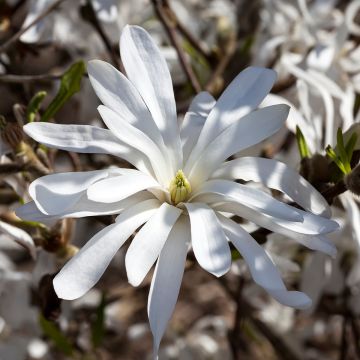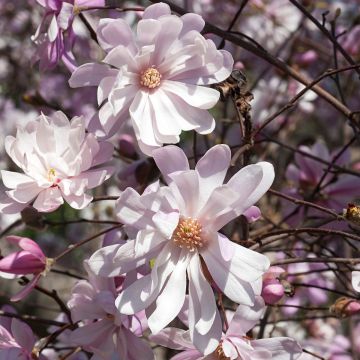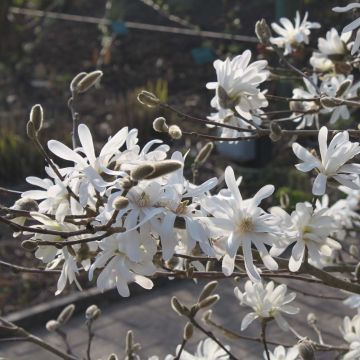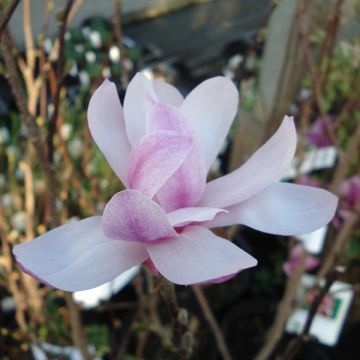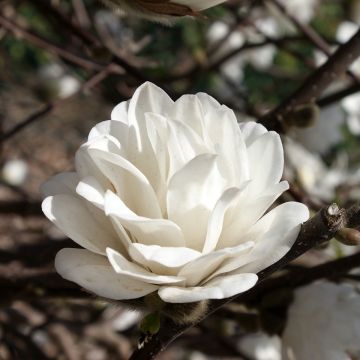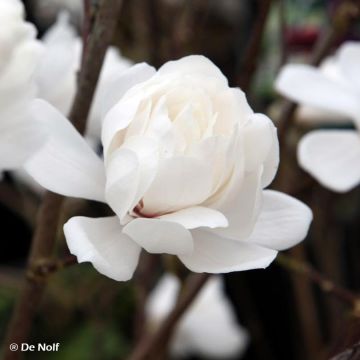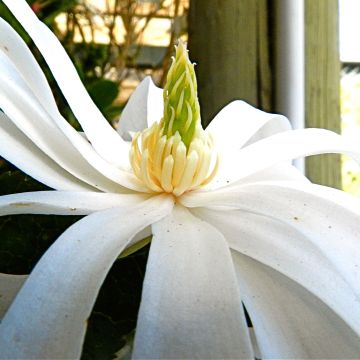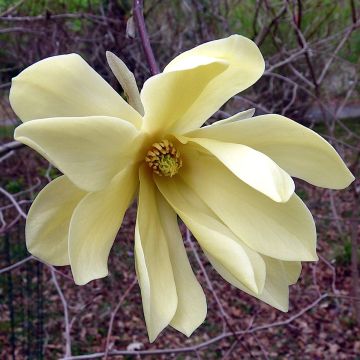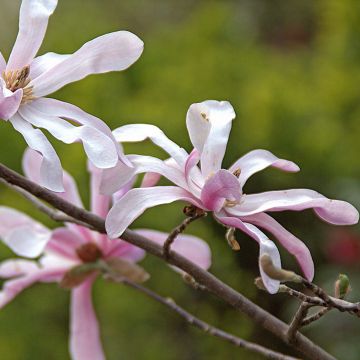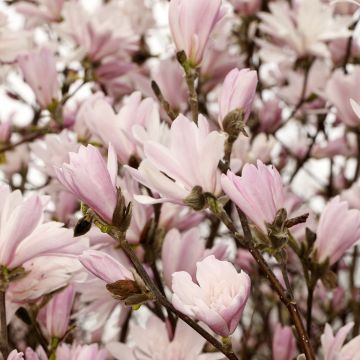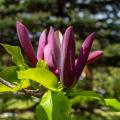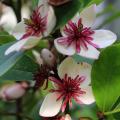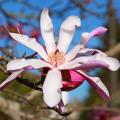Star Magnolia
Does this plant fit my garden? Set up your Plantfit profile →
Available in 5 sizes
Available in 3 sizes
Available in 2 sizes
Available in 2 sizes
Available in 1 sizes
Available in 2 sizes
Available in 2 sizes
Available in 2 sizes
Available in 2 sizes
Available in 1 sizes
Our selection of star magnolias. Magnolia stellata and its varieties are deciduous bushes of small to medium size (2.5 to 4 m (8 to 13ft) in all directions), very floriferous in spring, producing beautiful single to double star-shaped flowers, white to pink, slightly fragrant. The species, Magnolia stellata, is the earliest and most floriferous of the Magnolia genus. Its white flowers, 7 to 10 cm (3 to 4in) with multiple petals, cover the entire plant from March, before the leaves emerge. It comes in pink and double flowers (M. stellata Rosea), white and double flowers born from pink buds ('Waterlilly'), or even pink turning red in the 'Rubra' form. There is natural variation in flower colour in star magnolias, and the pink tones can vary from year to year depending on sunlight and nighttime temperature during flowering. Magnolia stellata has produced excellent garden hybrids by cross-breeding with Magnolia Kobus, such as Magnolia (x) loebneri Leonard Messel, a highly floriferous, hardy, tolerant, healthy, and truly easy-to-grow shrub. An amazing hybrid of the star magnolia, Magnolia stellata 'Gold Star' is unique with its pale yellow flowers that appear from April to May.
The star magnolia, an exceptional small ornamental tree, will work wonders in a modest-sized garden where it will quickly become the star attraction in spring. It is most often used as a standalone specimen in the middle of a lawn, where its remarkable flowering is most effective, but it is worth remembering that once the flowering is over, it will somewhat fade into anonymity. It will therefore be advantageous to associate it with a shrub border when planting.
Haven't found what you were looking for?







































